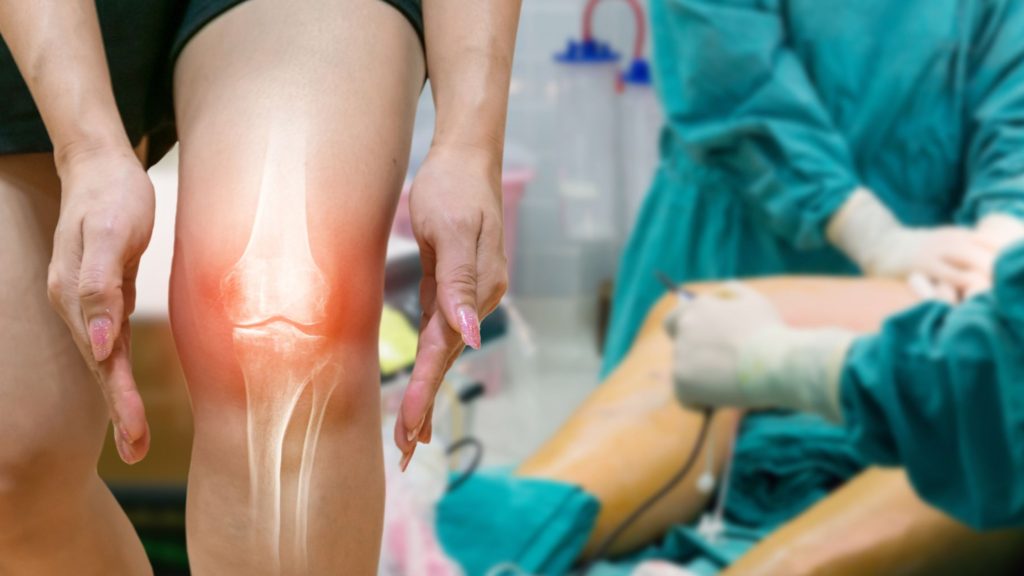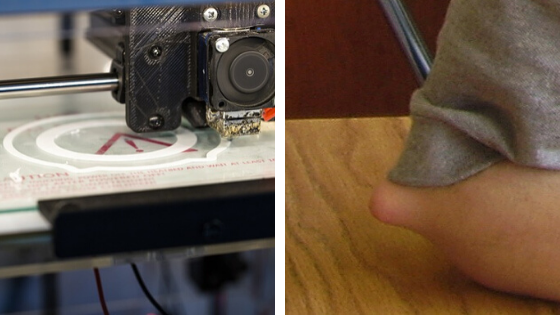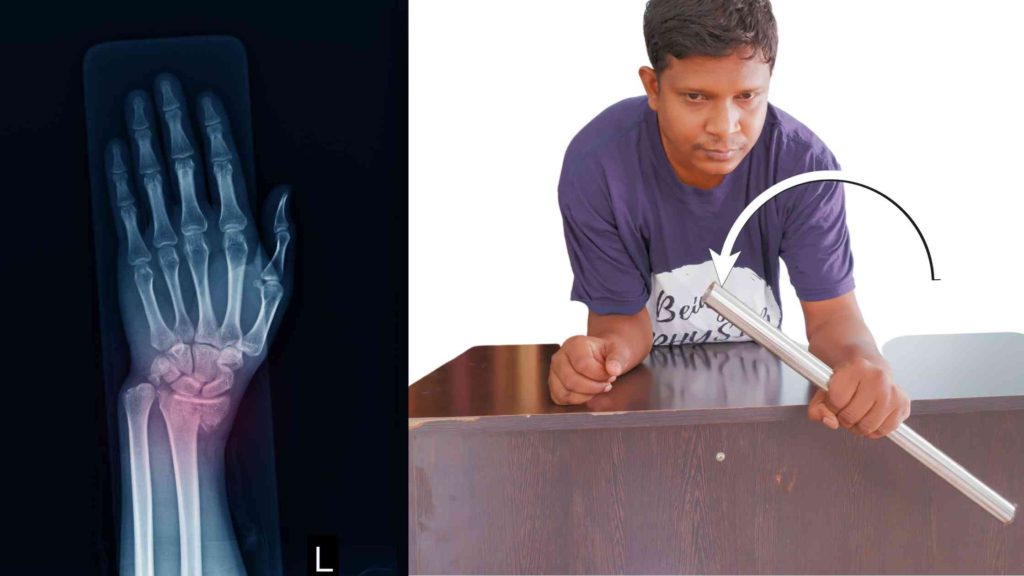Last updated on June 23rd, 2025 at 12:54 pm

- 🔹 ACL repair preserves natural ligaments; reconstruction replaces them.
- 🔹 Fiber Tape Internal Bracing improves repair success rates.
- 🔹 Reconstruction has a higher arthritis risk long-term.
ACL reconstruction vs repair.
When a ligament in your knee breaks, say you have an ACL ligament injury, two types of surgeries are performed: ACL reconstruction surgery and ACL repair.
The ACL, or Anterior Cruciate Ligament, is the most common ligament damaged in athletes; among them, the highest rates of recurrent ACL ruptures were among male football players, female gymnasts, and female soccer players1.
ACL Repair vs. Reconstruction: Key Differences Explained
When your ACL is torn, there are two main types of ACL surgery: ACL repair and ACL reconstruction. Both procedures involve removing the damaged ACL and then either repairing or reconstructing the ACL.
However, there are some differences between the two procedures. What are they?
1. How ACL Repair Works: Sutures vs. Reconstruction’s Graft Technique
So, let us first learn what ACL repair is. As the term suggests, the injured or torn ligament is rejoined surgically; it involves repairing the torn ligament with sutures.
However, this is only possible when the ligament is repairable, i.e., if the MRI suggests that the ligament is a partial tear or high-grade partial tear.
Ligament reconstruction is a different surgical procedure. If your ACL is not repairable, i.e., if the MRI shows a complete tear, the doctors will remove and reconstruct your old ACL by taking a graft from the hamstring tendon.
The hamstring muscle is on the back of the thigh; when inserted into the knee bone, it forms the hamstring tendon at this insertion point.
Since the advent of Fibre Tape Internal Bracing, the number of ACL primary repair surgeries has increased worldwide. Your torn ACL is repaired in primary repair, and Fiber Tape Internal Bracing protects the repair.
2. ACL Surgery & Arthritis Risk: Why Reconstruction Increases Long-Term Damage
Knee ligament reconstruction is associated with a higher risk of developing knee arthritis than ligament repair.
Why? Let’s find out.
Our ligaments, including ACL and PCL knee ligaments, have a natural supply of nerve fibres and blood vessels, which is crucial for nourishing ligament and joint cartilage. A healthy blood supply is essential to prevent knee arthritis from developing in the future.
In the reconstruction procedure, as the old torn ligament is completely removed, we also lose the original nerve fibres and blood vessels. Nerve fibres and blood vessels take much time to develop, increasing the risk of knee arthritis.
On the contrary, there is a lower risk of arthritis in ACL repair as the natural ligament, its nerves, and blood vessels are preserved. This can be a case where the ACL tear is on the femur (thigh) bone; in an early case, the primary repair is preferred.
In primary repair, your old torn ACL is completely repaired without needing a hamstring tendon graft. This way, your nerve fibres and blood vessels remain safe, resulting in the almost natural healing of the repaired ACL.
3. ACL Repair Success Rates: How Fiber Tape Internal Bracing Reduces Failure Risk
ACL repairs used to have a very high failure rate. Also, ligamentisation takes six months in the reconstruction procedure, meaning you must wait six months to start exercises and get back to running. Five criteria must be met after ACL surgery to initiate running.
However, the fibre tape internal bracing technique can drastically reduce these risks.
Nowadays, in ACL repair procedures, the repaired ligament is protected with fibre tape internal bracing, which has a very high success rate. After ACL repair, you feel very confident.
Its nerves and vessels are intact, and the chances of future arthritis are significantly less.
However, if a ligament tear is complete and not completely repairable, doctors opt for ACL augmentation.
In this procedure, the surgeon tries to repair the torn knee ligament as much as possible and also constructs another ACL from the hamstring tendon.
When Is Fiber Tape Internal Bracing Used? (3 ACL Tear Scenarios)
Depending on the degree of ACL injury and whether it is an early or late case, there are three options:
- Either ACL repair with Fibre Tape or an internal Bracing procedure is performed for a partial ligament tear.
- In a high-grade partial tear, ACL repair with ACL augmentation with Fibre Tape Internal Bracing with the hamstring tendon is done.
- In a late case and complete ACL tear, doctors opt to do ACL reconstruction with Fibertape Internal Bracing.
In all three cases, you can return to the sport because of Fibre Tape Internal Bracing. If your MRI shows a partial tear, a high-grade partial tear, or the ACL stem is visible, ACL repair with Fibre Tape Internal Bracing is the best operative technique.
Where your ACL is completely healed, tendons need not be removed. This is primary ACL repair, and its results are the best.
ACL Repair vs. Reconstruction: Pros, Cons, and Which Surgery Is Right For You
While both procedures offer similar outcomes, each has its own pros and cons. ACL repair provides some advantages over ACL reconstruction:
- In ACL repair, recovery is faster.
- It allows the surgeon to simultaneously perform additional procedures, such as meniscus or cartilage restoration.
- It is less expensive than ACL reconstruction.
However, ACL repair does come with certain risks. For instance, the repaired ligament can fail again later. However, fibre tape internal brace surgical procedures drastically reduce the failure rate.
Also, the procedure can cause damage to surrounding tissues. Finally, it is not recommended for patients who have had previous knee surgeries.
ACL Repair vs. Reconstruction Comparison Chart
| Aspect | ACL Repair | ACL Reconstruction |
| Surgical Procedure | Ligament is surgically rejoined with sutures | Damaged ACL is removed and replaced with graft |
| Repairability of ACL | Partial tears or high-grade partial tears | Complete ACL tears |
| Risk of Future Knee Arthritis | Lower risk, as natural ligament is preserved | Higher risk due to the loss of nerve fibers and blood vessels |
| Success and Failure Rates | Historically higher failure rate | Improved success rate with Fiber Tape Internal Bracing |
| Recovery Time | Faster recovery | Prolonged recovery due to ligamentization process |
| Use of Fiber Tape Internal Bracing | Yes, to protect the repaired ACL | Yes, especially in ACL repair to enhance success rates |
| Indications for Fiber Tape Internal Bracing | - Partial ligament tear: ACL repair with Fiber Tape Internal Bracing - High-grade partial tear: ACL repair with ACL augmentation using the hamstring tendon and Fiber Tape Internal Bracing - Late case and complete ACL tear: ACL reconstruction with Fiber Tape Internal Bracing | - Partial ligament tear: ACL repair with Fiber Tape Internal Bracing - High-grade partial tear: ACL repair with ACL augmentation using the hamstring tendon and Fiber Tape Internal Bracing - Late case and complete ACL tear: ACL reconstruction with Fiber Tape Internal Bracing |
| Pros and Cons | ACL Repair: - Faster recovery - Option for additional procedures - Cost-effective - Reduced re-tear risk with Fiber Tape Internal Bracing ACL Reconstruction: - Longer recovery - Increased risk of arthritis - Suitable for complete ACL tears | ACL Repair: - Faster recovery - Option for additional procedures - Cost-effective - Reduced re-tear risk with Fiber Tape Internal Bracing ACL Reconstruction: - Longer recovery - Increased risk of arthritis - Suitable for complete ACL tears |
ACL Surgery FAQs: Repair, Recovery Time, and Returning to Sports
The author is a physiotherapist who has been practising for the last 17 years. He holds a Bachelor's in Physiotherapy (BPT) from SVNIRTAR (Swami Vivekananda National Institute of Rehabilitation and Research), one of the prestigious physiotherapy schools in India.
Whatever he learns dealing with his patient, he shares it with the world through blogs and e-books. He also owns a YouTube channel, "Sunit Physiotherapist" with over 8 lakh active subscribers. Here, he shares everything he gets to learn serving the patient.

Dr Manu Bora
An expert in arthroscopic surgeries of knee, shoulder, ankle, and sports medicine, Dr. Manu Bora is one of the few surgeons in Delhi NCR India who practices all Inside ACL and PCL reconstruction with fibre Tape internal bracing.
Dr. Bora uses the most highly advanced and latest technology in ACL surgery that ensures instant recovery wherein the patient can walk pain-free without the support and bend the knee just a day after the surgery as opposed to the conventional technique that is painful and results in slow recovery.
With countless successful surgeries to his credit, Dr. Bora has mastered Total and Partial knee Replacement, Total Hip and shoulder Replacement, and cartilage transplant. He also has commendable expertise in knee multiple ligaments and complex shoulder surgeries. Various awards and appreciation for excellence bestowed upon him stand proof of Dr Bora’soutstanding performance in orthopedic and sports medicine.
In the wake of serving the society selflessly, Dr. Bora regularly engages in taking free sessions on injury prevention and increasing endurance in sports for athletes, CRPF, BSF, and police and dedicates ample time at sports clubs and government sports authorities for the same. He also takes free office ergonomics sessions in various companies.
Education & Qualifications
Top Asthroscopic Doctor in Gurgaon, Mumbai, Jodhpur, Bangalore
Dr. Manu Bora’s expertise and experience in orthopedic and sports medicine are an extension of his wide range of qualifications that include:
- MBBS – S.N Medical College, Jodhpur, Rajasthan
- M.S (Orthopedics) – Grant Medical College, Mumbai, Maharashtra
- Senior Residency – Sports Injury Center, Safdurjung Hospital, New Delhi
- Fellowship in Shoulder surgery from Istituto Clinico Humanitas, Milan, Italy
- Fellowship in Sports Medicine and Arthroplasty from Hospital Ambroise Pare, Paris
- Fellowship (Sports Medicine)- Hospital for Special Surgery, New York. Senior Residency from Sports Injury Centre, Safdurjung.
Expertise :
Procedures:
- ALL INSIDE ACL/PCL RECONSTRUCTION WITH FIBER TAPE INTERNAL BRACE
- PERCUTANEOUS CARTILAGE, LIGAMENT, TENDON REGENERATION
- Shoulder Arthroscopy ROTATOR CUFF AND BANKART REPAIR
- Knee Arthroscopy and Ligament Reconstruction
- Ankle Arthroscopy
- Cartilage Transplantation
- Fracture and Musculoskeletal Trauma Surgery
- Total and Partial Knee Replacement Surgery
- Hip Replacement Surgery
Memberships:
- International Society of Arthroscopy, Knee Surgery, and Orthopedics Sports Medicine (ISAKOS)
- Asian Arthroscopy Society
- Indian Orthopedic Association
- Indian Arthroscopy Society
- Indian Association of Sports Medicine
- Indian Federation of Sports Medicine
- Delhi Orthopaedics Association
Awards and Recognitions
- Dissertation completed, “Comparison between different procedures for internal fixation of fracture Metacarpal”.
- Best Sports Injury Expert in Delhi NCR – 2018.
- Innovative Orthopaedics and Sports Injury Surgeon of the Year – 2019
- Indian Healthcare Excellence Award – 2019
- Nations Pride Award – 2020
- Most Inspiring and Successful Sports Injury Surgeon – 2020





